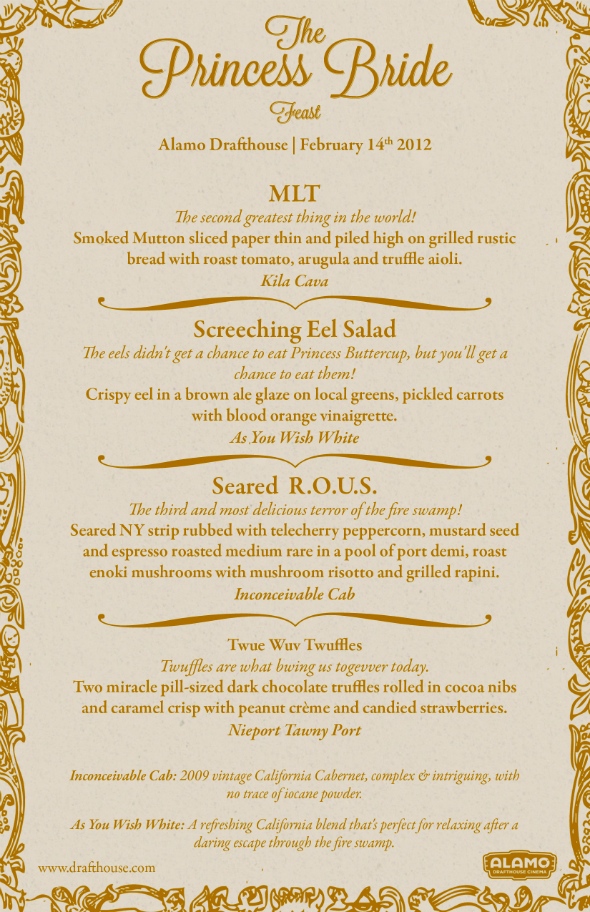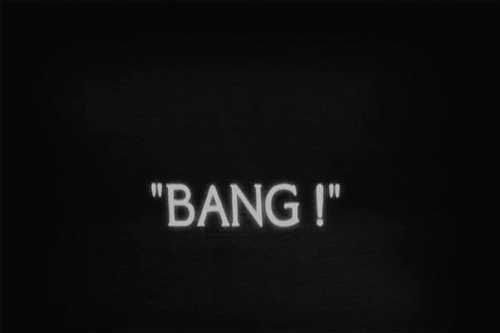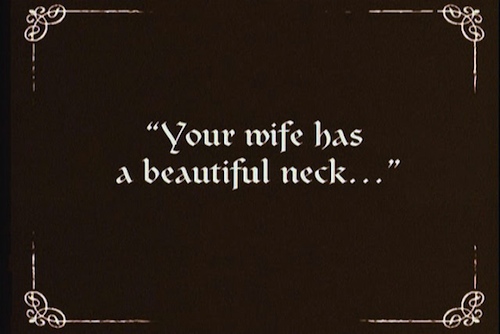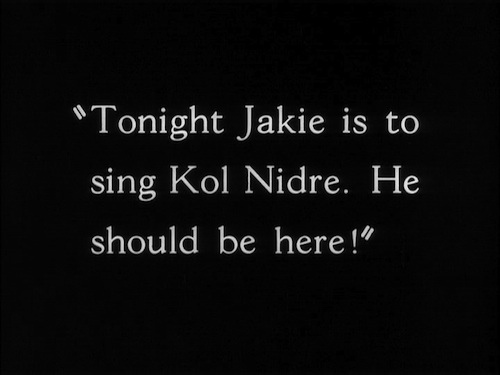Truffaut Google Doodles
Today would have been filmmaker François Truffaut’s 80th birthday had he not passed away in 1984. To honor his birthday, Google posted a very special doodle in place of their logo today for users in (at least) the UK and France.1 It’s a shame inquisitive Americans weren’t treated to a brief introduction to the French master, but the doodles are easy enough to get to. Here they are:

François Truffaut The 400 Blows Google Doodle
(via MUBI Notebook.)
-
The US site for Google opted not to partake in the doodle. ↩︎
Watch Koyaanisqatsi in 5 Minutes
{::nomarkdown}
Over on Vimeo, user Wyatt Hodgson has uploaded his first video entitled “Balance Out of Life” (embedded above). It is the entirety of Godfrey Reggio’s landmark 1982 film, Koyaanisqatsi: Life out of Balance, sped up exponentially bringing the runtime to just over 5 minutes. From Hodgson’s notes:
{% blockquote %} Video: Koyaanisqatsi at 1552% speed. (The year 1552 marks the publication of “A Short Account of the Destruction of the Indies,” an account of the mistreatment of the Indigenous Peoples of the Americas)
Audio: “The Holy Egoism of Genius,” a track off the 1999 album The Seduction of Claude Debussy by The Art of Noise. {% endblockquote %}
While this decontextualizes Reggio’s film (and does away completely with Philip Glass’s score) it isn’t any less mystifying than the original. Koyaanisqatsi has proven to have remarkable staying power for a film which is best experienced in a theater with live musical accompianiment.
Hodgson has reframed that experience. What does it mean that we can watch it online, windowed in a web browser, in as much time as it takes to take out the trash? I’m not sure, but questions like those are why I really enjoy this little experiment.
UPDATED 02/06/2012: Over in the comments on Vimeo, user stretta points to a sped up version of Philip Glass’s Koyaanisqatsi score he posted that matches the above video. I think speeding up the whole film, audio and video, provides a completely different experiment than what Hodgson was trying to do with his piece. Still, this seems a noteworthy addition so I’m embedding it below. You can mute the video and play the audio, but be warned, it’s not easy to make it through all 5 minutes.
Avid for iPad ⇒
{% blockquote fcp.co http://www.fcp.co/hardware-and-software/consumer/720-avid-launch-avid-studio-for-the-ipad-iavid-anybody Avid launch Avid Studio for the iPad - iAvid anybody? %} Didn’t see this one coming and we will try to get as many details up as soon as we can. Yes Avid have made their editing software available for the iPad at $4.99 and professional FCP editors around the world are suffering from mass schadenfreude. The price will jump to $7.99 after 30 days. {% endblockquote %}
While I haven’t test-driven the app (yet), it appears to be a knock-off of Apple’s iMovie for iOS. That isn’t necessarily a bad thing. The screenshots and product descriptions make it seem like Avid is improving upon Apple’s lead, bringing more “precision” (their word, not mine) tools to the iPad.
Projects created within Avid Studio for iPad can be exported and shared with Avid Studio for the PC (yep, Windows only). I had never heard of Avid Studio until this morning (is it brand new?) so I can’t comment on it. After giving its product description a once-over though, it appears to directly compete with FCP X.
There was a lot of noise in the editing community when Apple killed Final Cut Pro 7. It was assumed that the “pros” would opt for Avid’s high-end tools and the cheapskates would go for Apple’s playthings.1 Looks like Avid wants the low-end market as well. The more these two companies compete, the more innovative products we’re going to see in this space.
-
How many people still think FCP X is “iMovie Pro” because they read it on a blog last year? ↩︎
Alamo Drafthouse Debuts Princess Bride Wine and Menu ⇒
Austin’s Alamo Drafthouse is sure to win over hearts (even mine) this Valentine’s Day with a Princess Bride-themed menu to accompany a romantic screening of Rob Reiner’s 1987 film. Perhaps bigger news is that they are also launching two signature wines based on the film (“Inconceivable Cab” and “As You Wish White”). The wine, unlike the menu (which will only serve cinephiles and big-time nerds in Austin, Houston, San Antonio, Texas and Winchester, Virginia), will be available for order online sometime soon.
Nothing says true love like a mutton, lettuce and tomato sandwich, which is, of course, on the menu. No meal is too difficult for the Alamo kitchen to concoct. I learned this last year when, at a SXSW midnight screening of The FP, the wait staff brought out waffles and SpaghettiOs for everyone. That was an unwelcome surprise straight out of the movie. This, however, looks like a delightful way to spend a holiday that is too often short on cinematic creativity.1 Check out the menu (and a clip I couldn’t help embedding) below.
{::nomarkdown} {:/nomarkdown}

Alamo Drafthouse Menu
(via Eater.)
-
You can only see Casablanca so many times. ↩︎
Final Cut Pro X Updates Again ⇒
{% blockquote Apple Press Info http://www.apple.com/pr/library/2012/01/31Apple-Updates-Final-Cut-Pro-X.html January 31, 2012 %} Apple® today released Final Cut Pro® X v10.0.3, a significant update to its revolutionary professional video editing application, which introduces multicam editing that automatically syncs up to 64 angles of video and photos; advanced chroma keying for handling complex adjustments right in the app; and enhanced XML for a richer interchange with third party apps and plug-ins that support the fast growing Final Cut Pro X ecosystem. Available today as a free update from the Mac® App Store™, Final Cut Pro X v10.0.3 also includes a beta of broadcast monitoring that supports Thunderbolt devices as well as PCIe cards. {% endblockquote %}
Consider me excited for this “beta” of broadcast monitoring. Sounds like Apple is slowly (very slowly) filling in the gaps they left when they left behind Final Cut 7.
Also, 64 multicam angles? Holy crap.
(via Macrumors.)
Punctuation in The Artist
Michael Leddy really liked The Artist. Well, he liked most of it:
There’s only one false touch in the film, and I’m not embarrassed to point it out: the intertitles use straight (“dumb”) quotation marks (
" ") around dialogue, not curved (“ ”) quotation marks, aka “book quotes” or “curly quotes” or “smart quotes” or “typographic quotation marks.” Glance through an assortment of silent-film intertitles and it’s easy to see that proper quotation marks were the norm.
Technically, he’s right. Not all, but a great many silent films did use curly quotes, especially those that survive to this day. However, I think this kind of niggling misses the point of The Artist. Director Michel Hazanavicius is such a cinematic nerd I have little doubt his typographical choice was deliberate (unlike Brad Bird’s), or at the very least, considered.
The Artist may be a silent film about the silent age, but formally it is cut from the anachronistic cloth of the 1940s and 1950s. Hazanavicius makes this as clear as possible with allusions to Citizen Kane and the now infamous use of Bernard Herrmann’s Vertigo score. Historicity is the last thing he is trying to sell.
I am now left to wonder, however, what was the point of using “straight” or “dumb” quotes? If I concede that the director did so intentionally, surely he had a reason. Perhaps it was a statement on the utilitarianism of post-modernity; that the curlicued flourishes of yesteryear have washed away with the career of the film’s protagonist, George Valentin. Sure, we have our own forms of frippery leftover (tap-dancing and puppies) but in the end the machines have won. Our punctuation is without personality.
Or there’s nothing to this at all.

The Artist Intertitle

Nosferatu Intertitle

The Jazz Singer Intertitle
David Bordwell on the Digital Art House ⇒
David Bordwell’s growing series on the move from 35mm film to digital projection is absolutely stellar reading. In today’s entry, he tracks what the changeover is like for art house cinemas:
{% blockquote -David Bordwell http://www.davidbordwell.net/blog/2012/01/30/pandoras-digital-box-art-house-smart-house/ Pandora’s digital box: Art house, smart house %} It’s comparatively easy for chains like Regal and AMC, which control 12,000 screens (nearly one-third of the US and Canadian total), to make the digital switchover efficiently. Solid capitalization and investment support, economies of scale, and cooperation with manufacturers allow the big chains to afford the upgrade. But what about other kinds of exhibition? {% endblockquote %}
The long piece includes crack reporting from the Art House Convergence that took place just before Sundance this year. By my read, Bordwell offers the clearest, most extensive account of the state of the digital transition available today.
One thing I didn’t know is that the major studios are attaching all sorts of requirements to theaters that accept a subsidy in order to hasten the transition to the Digital Cinema Package (DCP) format.
{% blockquote %} More constraints appear if the exhibitor chooses to fund the changeover through the Virtual Print Fee. For example, VPFs oblige the exhibitor to screen only films supplied by the major companies–the ones that created the Digital Cinema Initiatives. If an exhibitor wants to play an independent distributor’s title on a DCP, that distributor needs to pay the fee, in effect helping to cover the theatre’s conversion. Other constraints are more obscure. I can’t report reliably on them because when joining a VPF program, the exhibitor signs a non-disclosure agreement pledging not to reveal details of the deal. But hints suggest that exhibitors could be prevented from “splitting,” that is showing two or more films in the same auditorium on one day. This is a practice that many art cinemas rely on because it allows them to vary programs in mid-week, or to compensate for having only one or two screens. {% endblockquote %}
The first sign of danger, in my opinion, is that the studios (who comprise the Digital Cinema Initiatives, or DCI, which oversees the DCP format) require a non-disclosure agreement at all. Sure, it’s their right, but they’re effectively the only game in town. What are they hiding?
(h/t Ryan Gallagher.)
Make a Linked List With Octopress
Here’s a Twitter exchange that I woke up to this morning:
Fair warning: this is going to be one of those “how to code” type posts. I’ll return to the regularly scheduled film-related nonsense shortly.
Okay, so, “Daring Fireball-style Linked List posts,” for the uninitiated, refers to the publishing style of John Gruber’s Daring Fireball. For the most thorough explanation of how this works, see Shawn Blanc’s excellent 2009 article, “The Link Post,” in which he calls this kind of link “The Out and About”:
What especially sets The Out and About apart is its feed format. Because not only do the Link Post titles point directly to the linked-to content, but so do those in the RSS feed.
That’s basically how I implement link posts here on the candler blog. Regular posts feature unadorned headlines while link posts are denoted by an additional glyph at the end of the headline. I use the double arrow, ⇒ (⇒ in HTML).1 The headlines of all link posts go to another site, both in your web browser and in your RSS application. They also feature a permalink at the bottom of the post so you can always find a way to get back to my site, which usually features commentary of some lasting value (I hope).
But how is it done in Octopress? It’s actually very simple. I got a great deal of help, when I was first setting up the site, from Connor Montgomery, who posted his own link post tutorial a few weeks ago. I have since refined the code on my site beyond what we worked out together.
The first thing to know is that Octopress will read anything you put into the YAML front matter of a post.2 Just add a new line with a colon and then that content is readable by the rest of your theme. Here’s my YAML front matter on a link post:
{% codeblock lang:ruby Sample YAML Front Matter %}
layout: post title: “Extremely Smart and Incredibly Handsome” date: 2012-01-30 05:00 comments: true categories:
- Nerdfest externalurl: http://www.somewhereelse.com/whatever
{% endcodeblock %}
Notice the last line that says external-url. Now throughout the theme I can use post.external-url to let Octopress know what to do with any post that has that line in it. If you called that line foo then you would simply place post.foo throughout your theme.
Now we need to dig into the theme to make use of that fancy new external URL line. First up is /source/_includes/article.html. This is the file that determines what your posts look like. Let’s change the header so that it links out to the external-url we just set and add a glyph to the end of it.
{% codeblock lang:html Top of article.html %}
Octopress, which is based on Jekyll and the Liquid templating engine, makes quick work of turning just about anything from your YAML front matter into part of the theme. Once you tell the theme to treat links posts differently with {\% if post.external-url %}, then all you have to do is define your link out with <a href="{{ post.external-url }}">. That’s it. No scripting, no plugins. Just old-fashioned HTML. Neat.
We still need to add a permalink to the end of the post. Again, easy as pie. Let’s just head back into article.html only this time we’ll focus on the bottom portion. The following should be the last lines in your code. 3
{% codeblock lang html Bottom of Article.html %} {% if post.external-url %} Permalink {% endif %} {% if page.external-url %}
Same idea, only now we’re adding the permalink back to your site. This permalink appears both on the main list of posts and in the specific post page. I find this makes it easy for readers to find the direct URL no matter how they came to the page.
Finally, we need to get the RSS feed to link out and have permalinks back to the original posts. To do this, we need to make a few edits to /source/atom.xml. This certainly freaked me out more than editing plain old HTML, but it’s actually just as simple. Thanks to Octopress’s handy rake preview command, it’s easy enough to test your changes locally, even for the RSS feed. I test my site in Safari on a Mac, so I’m able to initiate the RSS feed in-browser.4
{% codeblock lang:xml Changes to Atom.xml %} {% for post in site.posts limit: 20 %} {% if post.external-url %} {% else %} {% endif%} {{ post.date | date_to_xmlschema }} {{ site.url }}{{ post.id }} {% if post.external-url %} {% else %} {% endif %} {% endfor %} {% endcodeblock %}
Again, it’s just a matter of placing that post.external-url in the right place. I’ve been deploying this site like this for weeks without incident.
I’m not really a coder, but I find that Octopress makes it pretty simple to implement any kind of customization. When I implemented a similar system on Wordpress it required installing a plugin (the excellent DFLL Plugin) and fiddling around with the site’s theme. I found the process on Octopress decidedly more enjoyable. Instead of being at the mercy of plugins (which add bloat and an extra layer of management to your site) I was able to get this running with a basic understanding of HTML. Better, the ability to test the site locally allowed me to screw up over and over again until I got it right. And I think I finally did.
So, did I leave any details out? Anything else you want to know about how this works? Ask me in the comments.
-
This is actually the opposite format that Gruber uses on his site, where link posts are the norm and original writing features an added glyph before the title, in his case a ★. ↩︎
-
YAML front matter is just computer-nerd way of saying Metadata. All of the non-post information, like author, publish date, tags, etc. goes into the top of every posts. Octopress then parses that data when you publish. ↩︎
-
These lines actually need to be followed by the code version of basically
else > content > endif, but for some reason I’m having trouble embedding it here. This Gist should fill in the blanks. (Gist embedding actually isn’t working either. I guess there are a few things to fix around here.) ↩︎ -
If you use a feed re-broadcasting service such as Feedburner (like I do) don’t worry, if the feed your site generates locally is spot on then it will get to Feedburner without issue. ↩︎
Ads
I am happy to announce that the candler blog is now a part of the InfluAds advertising network. You may have gotten the impression that I hate ads when I took Hulu to task recently, but that’s not the case. I hate crappy content, and ads are undeniably content.
When I started the candler blog back in 2009, I signed up for Google Adsense. I had zero control over what which ad appeared on my site and limited options to determine what it looked like. For most of the time I had a Google Adsense ad on my site, it actually didn’t fit in my sidebar, but I left there because, hey, I needed the money.
Only I never got a check from Google. The rates Google pays make it difficult for a small site to reach the minimum for them to cut a check. You can game the system by covering your site in ads but that’s not why I started doing this. Fed up, I killed the ad.
InfluAds is different. They call themselves “The Quality-Only Advertising Network” and, so far, I think that’s a pretty apt description. It’s simple: one good-looking ad per page. No obtrusive banners, no whack-a-mole animation, no “stay at home mom discovers weight loss secret” bullshit. They even give me some design control over the ad. Everything but the graphic itself can be modified with CSS, so I can make the ad look the way I want it to. It is my site, after all.
And that’s it. Editorially, nothing is changing around here. The only thing the advertisers want me to do is to make the best site I can. As I’ve said before, I hope I’m up to it.
Film Projectionist Takes to Reddit ⇒
Last night on Reddit, redditor Shiftia took to the site to open a conversation about the death of film projection:
{% blockquote %} IAMA movie theater projectionist. In a few weeks, my job will no longer exist.
In less than a month, all theaters are being forced to use purely digital projectors. Projection itself has become a dying art.
Feel free to ask me anything about projection, movies, or working at a theater in general! :) {% endblockquote %}
770 comments at the time I’m posting this and still growing. The top comment is by a digital projectionist who points out that there is still an art to operating new, digital projectors.
{% blockquote %} As someone who worked in a digital projection multiplex… your job isn’t going to be gone for long.
A multitude of things can go wrong with digital projectors… they’re computers! {% endblockquote %}
If you’re interested in the transition from film to digital, this conversation provides some great insight.